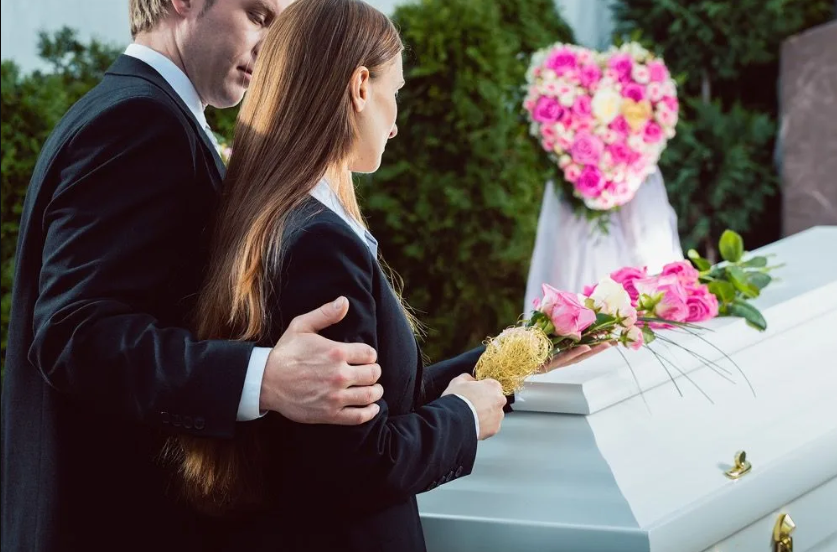Introduction To A Sensitive Journey
The funeral process is an emotional experience for families and communities. While death is a universal truth, navigating the arrangements that follow is often overwhelming. Knowing what to expect during the funeral process can provide comfort, clarity, and a sense of control during a very difficult time.
This article explains each stage of the funeral process in a respectful and comprehensive manner, offering guidance to those who may be planning, attending, or preparing in advance.
Initial Steps After A Death
The first stage in the funeral process begins immediately after the passing of a loved one. Whether the death occurs at home, in a hospital, or in a care facility, the family or attending staff must notify the appropriate authorities.
Once the death is officially confirmed, a medical professional issues a death certificate. This document is necessary for all legal and administrative purposes, including burial, cremation, and estate management.
At this point, families may contact a funeral director or funeral home to help with the arrangements. The funeral director assists in transportation, documentation, and planning the services.
Choosing Between Burial And Cremation
One of the primary decisions in the funeral process is choosing between burial and cremation. This is often based on religious beliefs, family traditions, or the wishes of the deceased.
- Burial involves placing the body in a casket, followed by interment in a cemetery plot. Families may choose a public, private, or family-owned burial ground.
- Cremation reduces the body to ashes, which can be kept in an urn, scattered in a meaningful place, or buried.
Both options may include a memorial or funeral service, which allows loved ones to gather and honor the memory of the deceased.
See also: Kids Insulated Water Bottle: A Smart Hydration Choice for Active Lifestyles
Planning The Funeral Or Memorial Service
The funeral process is an essential part of the healing process. It provides an opportunity for family and friends to share memories, express emotions, and pay their respects. The funeral process at this stage involves several choices:
- Selecting a venue (funeral home, religious center, family home, or gravesite)
- Choosing an officiant (priest, pastor, celebrant, or family member)
- Arranging readings, prayers, music, and eulogies
- Preparing visual tributes such as photo boards or videos
Personal touches such as flowers, favorite songs, or items related to the deceased’s life can be added to reflect their personality.
Viewing Or Visitation Before The Service
Many families include a viewing or visitation as part of the funeral process. This gathering allows attendees to see the body, offer condolences to the family, and say their final goodbyes.
This event usually takes place one or two days before the funeral and can be open to the public or limited to close family and friends. The body is typically prepared and presented by funeral professionals to ensure a respectful appearance.
The Funeral Service And Final Goodbye
The funeral service itself is often the most emotional part of the funeral process. It may follow religious or cultural rituals, depending on the beliefs of the family or the deceased. This can include:
- Opening prayers or meditations
- Readings from scripture or literature
- A eulogy by a loved one
- Musical performances
- Moments of silence or candle lighting
The service may be conducted in a church, temple, mosque, funeral home, or outdoor setting. After the service, the body is transported for burial or cremation, marking the final physical goodbye.
Committal Or Interment Ceremony
For burials, the committal or interment ceremony follows the funeral service. It takes place at the gravesite where the casket is lowered into the ground. Family and friends may choose to say a few words, lay flowers, or participate in cultural or religious rituals.
This part of the funeral process brings a sense of closure. Although simple, it holds deep meaning for many families as they say their final farewells.
Cremation And Handling Of Ashes
If cremation is chosen, the body is respectfully prepared and transported to a crematory. The ashes are then placed in an urn and returned to the family. Some families choose to:
- Keep the urn at home
- Bury it in a cemetery
- Place it in a columbarium
- Scatter the ashes in a significant location
Each option offers different ways to preserve the memory of the deceased. The decision depends on the family’s preferences or any wishes previously expressed by the individual.
Post-Funeral Gatherings And Receptions
After the funeral or cremation, many families hold a reception or meal. This informal gathering provides a comforting space for loved ones to talk, share memories, and support each other. It can be hosted at a family home, restaurant, or community center.
The post-funeral gathering is not a required part of the funeral process, but it is widely appreciated for its emotional support and sense of togetherness.
Cultural And Religious Considerations
The funeral process can differ widely based on cultural and religious backgrounds. For example:
- Christian funerals may include hymns, scripture, and burial rituals
- Islamic funerals emphasize swift burial, ritual washing, and specific prayers
- Hindu funerals typically involve cremation, chanting, and immersion of ashes in sacred water
- Buddhist traditions may include chants, incense, and meditation
- Jewish funerals often include a plain casket, no viewing, and mourning rituals like shiva
Understanding these traditions ensures that the funeral process remains respectful and meaningful.
Grief And Support After The Funeral
The end of the funeral does not mean the end of mourning. The grieving process continues long after the final ceremony. Many individuals seek support from:
- Grief counselors
- Support groups
- Religious leaders
- Friends and family
Acknowledging grief is an essential part of healing. Families should be encouraged to talk openly, remember their loved ones, and take the time they need to process their emotions.
Conclusion
The funeral process is a deeply human experience. It honors the life of the deceased while offering peace and support to the living. By understanding each step, from the initial arrangements to the final goodbye, families can feel more prepared and supported during an incredibly difficult time.
Whether planning in advance or facing an unexpected loss, knowing the process helps in making compassionate and respectful decisions that reflect the dignity and love every life deserves.





